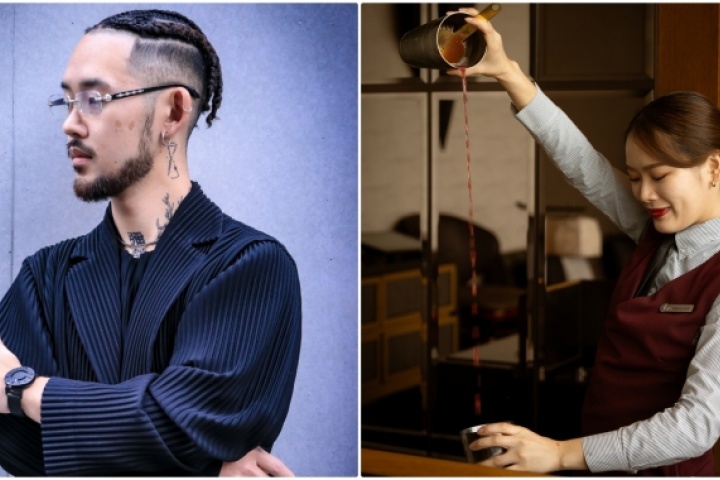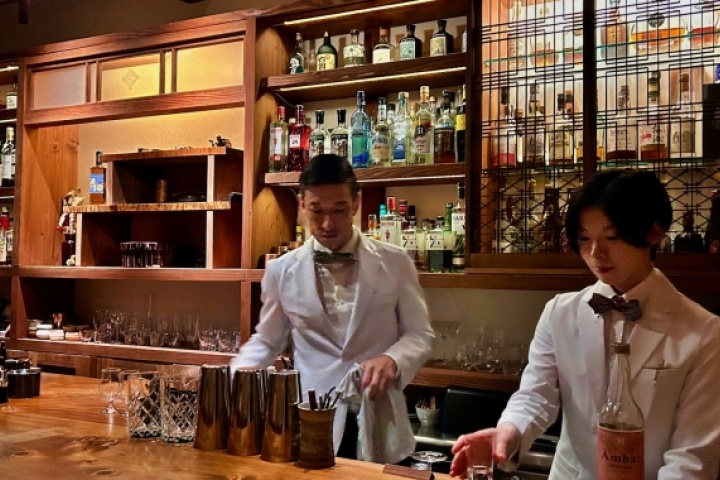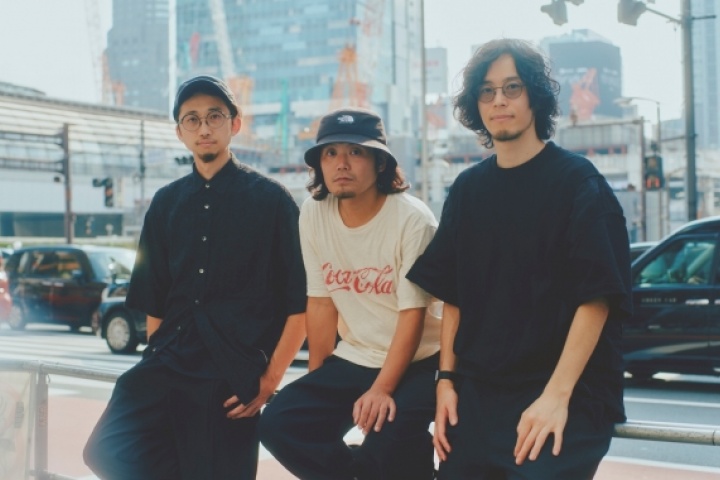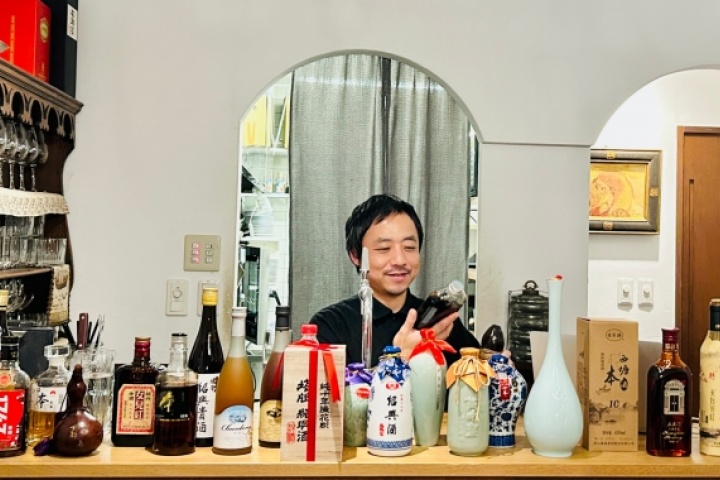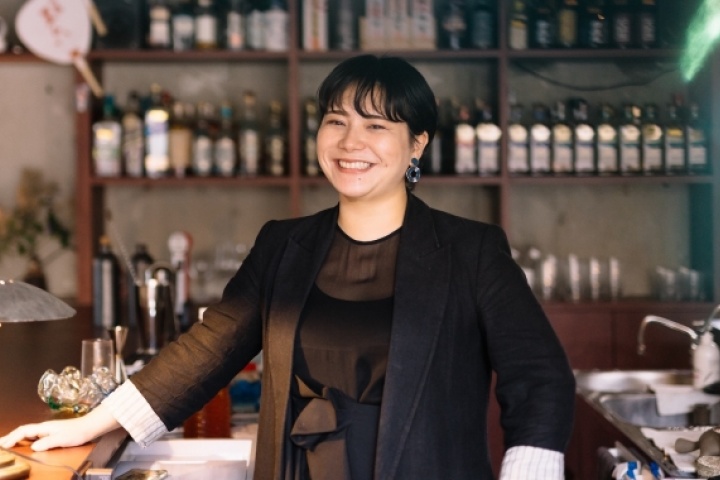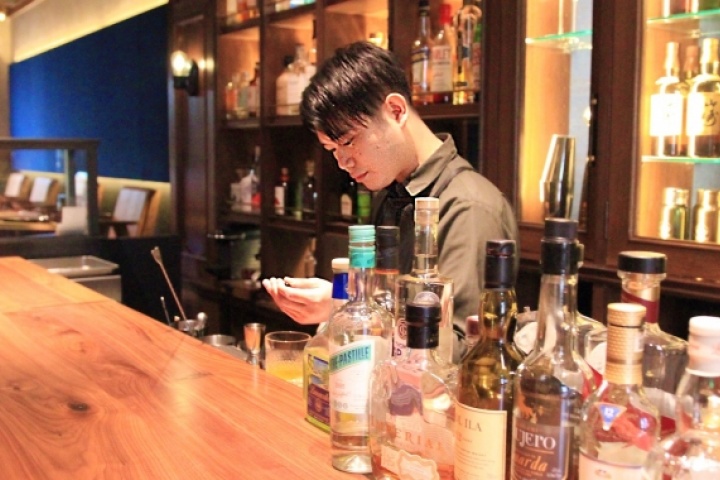
PICK UP
Goto Tsubaki Distillery:
"GOTOGIN" expresses the "aroma" of the landscape in gin -Part 1
#Pick up
Kadota Kunihiko/門田クニヒコ、Kitou Hideaki/鬼頭英明 from「Goto Tsubaki Distilery」
writer:Ryoko Kuraishi

From left, Kunihiko Kadota, Hideaki Kito, and Shunsuke Komoto of Goto Tsubaki Distillery.
The westernmost island of Kyushu, an island steeped in history and nature.
Goto, in Nagasaki Prefecture, is the westernmost island archipelago of Kyushu, consisting of about 150 islands of various sizes.
It is an island of wonders where traces of history, such as the remains of Japanese envoys to China in the Tang Dynasty and the legacy of Christian missionaries in hiding, coexist with the richly varied nature of the cobalt blue sea, natural white sand beaches, and volcanic landscapes.
In December 2020, a gin distillery opened on Fukue Island, one of the main islands of Goto.
The distillery, named "Goto Tsubaki Distillery," was established by three retired Kirin employees who are now embarking on their second careers.
The team consisted of Kunihiko Kadota, president; Hideaki Kito, in charge of development and production; and Shunsuke Komoto, in charge of marketing and public relations.
In this issue, we are joined by Mr. Kunihiko Kadota, who took a step toward his dream of "making independent and unique sake" after reflecting on his career at the age of 50, and Mr. Kito, who has been thinking about making spirits on a southern island one day since he was working for Kirin, In the first part, we will introduce what they aimed for with "GOTOGIN" and the unique craftsmanship of "Goto Tsubaki Distillery".

The distillery is located in the northern part of Fukue Island, the center of tourism in Gotō, in the "unexplored" village of Hantomari.
Mr. Kadota: "In my previous job, I worked for 30 years in the field of manufacturing, delivering "delicious, safe, secure, and cost-effective" alcoholic beverages to many people.
We are proud of that, but at the same time, if we were to take on a new challenge, we wanted to aim for a different direction in spirits, while still adhering to the philosophy of sake production that we have gained from our past experience.
The three of us share the value that "the charm of sake is the story," and we felt that the recent world of sake had lost the narrative that once attracted us, so we wanted to take on the challenge of making sake that is deeply connected to scenery and stories, as Haruki Murakami wrote in his essay. I wanted to try my hand at brewing sake that is deeply connected to the landscape and stories that Haruki Murakami wrote in his essay.
In addition to being blessed with abundant nature and water, Gotō was chosen as the distillery's base because of its "unique scenery and history, and it fits perfectly with the narrative of expressing the scenery through aroma.
The distillery is located in the small village of Handomari on Fukue Island, where only five families live. The village, located at the end of a winding mountain road, is said to have been a place where Christians used to hide during the Edo period (1603-1868).
The distillery building is adjacent to the Catholic Church of Hanmari, which is located in the village. Mr. Kadota and his team also play a role in preserving this small church.

Goto's typical scenery. The upper right is the leaves and fruits of camellia used in "GOTOGIN".
The terroir and history of the land is broken down and expressed in the aromas.
Mr. Kito: "In my previous job, I was involved in the development and production of liqueurs, spirits, shochu, wine, and flavors and fragrances, focusing on whiskey blends and the development of original whiskey.
That is why we wanted to create something more palatable here. Our goal was to express history, climate, and landscape through taste and aroma.
The sea is beautiful, the mountains are deep, and there is a history of Christianity. As a development manager, the more elements I want to express in taste and aroma, the more rewarding it is to create, and I realize that Gotō is a treasure house of stories.
We decided to mobilize all of the techniques, experience, and knowledge we have cultivated to date to capture the wind from the sea, the smells that pervade the land, and the aromas that are unique to this place," he said.
What approach did you take to express the landscape in taste and aroma?
First, we selected the elements we wanted to extract from the landscape of Gotō.
Mr. Kito and his team chose the sea, wind, soil, camellias that grow wild on the island, the complex history of the island, and the compassion that overflows on the island. These elements are broken down and applied to the fragrant components of the plants.

A view of the inside of the distillery with beautiful stained glass windows.
Mr. Kito: "Our gin is a spirit that creates aromas by blending aroma and taste elements that focus on flavor components, or chemical substances.
The smell of the sea breeze of Gotō is represented by the blue hues derived from Tsubaki tea (camellia leaves) and the seaweed-like nuances found in raspberries. The sweet aroma of heated raspberries expresses compassion.
The key botanical, camellia seed, brings together the 17 botanicals selected in this way. When the oil contained in the berries is extracted through distillation, it brings the overall aroma together to create harmony and soften the alcohol taste."
The production method is also unique. Each of the 17 plants is distilled one by one in order to pinpoint and extract the desired aroma components from each plant.
This is because each botanical has different distillation details, such as how the berries are split and processed, the alcohol content, boiling point, and cutting point.
The essence of each botanical is blended at the end to create a flavor and aroma that expresses the desired landscape. In other words, the process is the same as that for fragrances.

GOTOGIN comes in a bottle that resembles a camellia flower bud. Ingredients include juniper berries, camellia seed, camellia tea, camellia oil pressed lees, nutmeg, licorice, angelica, yuzu, cacao nibs, almonds, Japanese black tea, cinnamon, Aoyama pepper, green raisins, raspberries, cardamom and coriander.
In order to express the landscape of each region through its aroma, the "gotogin" method, in which each botanical is distilled separately as in the case of fragrances, maximizes the characteristics of each plant, but is so labor-intensive that it is difficult for other distilleries to adopt it.
Mr. Kadota said, "It is said that if you compare it to painting, whiskey, which is limited in its production process and raw materials, is like an ink painting, while gin, which has a high degree of freedom, is like an oil painting, because it has a wide range of expression like oil paints.
What we make is not a gin, but a spirit like an impressionist painting that uses botanicals to depict a landscape.
Goto Tsubaki Distillery" pursues a unique view of the world by utilizing the skills and knowledge of the three distillers and using a unique production method.
In the second half of the interview, Mr. Kadota and Mr. Kito will take a look at the current craft gin scene and consider the keywords of the scene.
To be continued.
SHOP INFORMATION
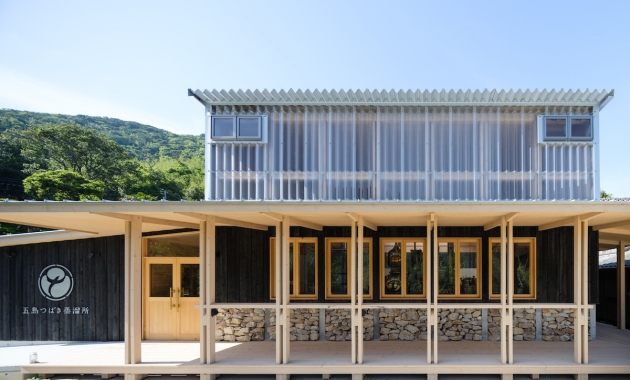
|
 |
|---|---|
| Goto Tsubaki Distilery 五島つばき蒸溜所 |
|
|
Hantomari 1223, Togicho, Goto, Nagasaki URL:https://gotogin.jp/company-info |
- Drink Planet >
- PICK UP >
- Goto Tsubaki Distillery: "GOTOGIN" expresses the "aroma" of the landscape in gin -Part 1
![[Drink Planet] Cocktail portal site for bartenders](/img/common/logo.png)

![[Drink Planet] Cocktail portal site for bartenders](/img/common/logo-l.png)
